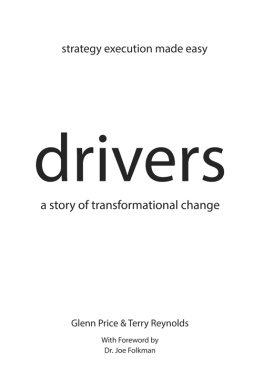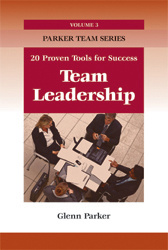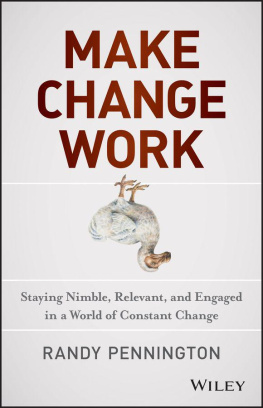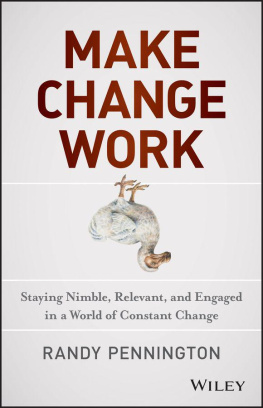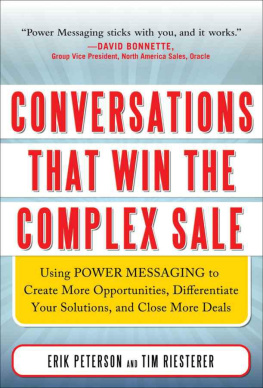
Contents
Part 1 |
Chapter 1 |
Chapter 2 |
Chapter 3 |
Part 2 |
Chapter 4 |
Chapter 5 |
Chapter 6 |
Part 3 |
Chapter 7 |
Chapter 8 |
Chapter 9 |
Part 4 |
Chapter 10 |
Chapter 11 |
Chapter 12 |
With Foreword by
Dr. Joseph Folkman,
Co-author of the best-selling books
The Inspiring Leader: Unlocking the Secrets of How
Extraordinary Leaders Motivate, The Extraordinary Leader:
Turning Good Managers into Great Leaders and How to
be Exceptional.
www.zengerfolkman.com
Illustrations by
David Lewis
www.davidlewiscartoons.com
Acknowledgements
You might skip past the acknowledgement in a book, ready to dig into the good stuff. But we believe that there are a few words worthy of your attention before the story even begins.
We would like to express our gratitude to the many people who encouraged us to complete this book; to all those who provided support, talked things over, read, wrote, offered comments, allowed us to use their remarks and assisted in the editing, proofreading and design.
Of special note, we wanted to highlight the early development of the Vision to Results model by Jim Robertson. The model has certainly been further refined and tested, but it wouldnt even exist without Jims original curiosity.
We would also like to take the opportunity to thank the many clients around the world who have been part of our research, strengthened the model, and reaped the benefits of embedding the Vision to Results framework in their organizations. It couldnt have happened without youthe leaders.
Foreword
Dr. Joseph Folkman
I grew up in a small town in the Western United States, in the state of Utah, called Logan. To make extra money and to keep me out of trouble, my mother got me a job working for my Uncle Chester who lived in a smaller town called Providence. My uncle was a farmer. I vividly remember a clear spring day when my uncle asked me to jump in the truck and he drove to a field on the outskirts of town where he grew wheat. At the end of the field I spotted his yellow Caterpillar tractor parked and hooked up to a plow. My uncle turned to me and announced, Youre going to plow! I was 12 years old, I had driven his other tractor once or twice before but the Caterpillar looked bigger and more powerful. All I could think of was, Cool, this is going to be fun!
My uncle was an excellent teacher. He sat down in the tractor seat while I stood behind him and looked over his shoulder. He explained how to start the Caterpillar tractor because the process was a bit different with a diesel. He showed me how to turn the tractor because it did not have a steering wheel, rather two levers that controlled each track, and he taught me the basics of how to plow. He then plowed up the field, turned around and plowed back down. When we got back to where we started he stopped the tractor and announced, Now its your turn. I got in the seat and right before I was ready to move forward my uncle said, The most important thing about plowing is to plow straight and stay about two inches from the furrow on the left track. I confidently announced, No problem and started moving forward. In order to stay two inches away from the furrow I leaned over to the left side of the tractor and watched the track, constantly adjusting the distance between the furrow and the track. When I got to the end of the field my uncle said, Now, look back and see how you have been doing. What I saw was a wavy furrow not a straight line. My efforts to try and keep the tractor two inches from the furrow caused me to constantly adjust the tractor to the right and then back to the left. After I turned and stopped the tractor, my Uncle Chester said, I am going to teach you a principle about how to plow straight. He said, Look down at the end of the field. Do you see that fence post straight in front of us? I looked down the field and saw the post. He then said, Aim for the fence post!
It turns out that when you Aim for the fence post you can plow straight. My experience on the tractor is very similar to the experience many employees have in organizations. They are trying to do a good job. They want to deliver results. They know how to do their job well. They have been given very specific instructions but they are looking down. They make lots of adjustments but they are still looking down. They are focused on the specifics of doing their job well but they are not focused on the vision. When people are confused about the vision or they are not focused on the vision, the result always suffers.
In my consulting work with organizations, I have told this story hundreds of times along with data, models and processes. At the end of a speech or a workshop I often ask people what they remember. They can sometimes recall that I presented some data. They might know where a model is located in their workbook or where they can refer to a process, but for some strange reason they can repeat the specific details of this story almost word for word. Glenn Price and Terry Reynolds could have given you hundreds of pages full of data, evidence, models and processes; instead, they have provided a compelling story of an organization going through profound change. They include a summary of principles and process at the end of each chapter but what you will remember when you are in a similar situation, is not the models or the process steps, it is the story. By remembering the story you will recognize how you can move forward and what you can do. I contend that the story Glenn and Terry tell is not fiction; it is a story they have seen repeated hundreds of times in different organizations, it is very consistent and predictable. Read the book. Remember the story. Reflect on the principles. You will find they provide you with a fence post at the end of your field.
Part One
Set Direction
Chapter One
Vision
S cott Boylan measured his clients moods as much with his ears as his eyes. Even so, the client didnt need to say a word. Scott just needed the first five seconds after they opened the car door. Theyre giving themselves away from the moment they grab the handle, he told his younger drivers. By the time theyve sat down and put on their seat belts, I know whether theyre happy about where theyve been, or glad to be going where theyre going.
Then again, you didnt always need a decades experience to read a mood. This mornings first passenger snatched at the door and sank into the seat as if hed like to shut out the world for good. Those moods, Scott knew, called for less, not more.
Straight to the office, Mr. Dalton?
Just drive, Scott, said the man in the tailored suit, pushing a hand through rain-wet hair. Anywhere except the office.
Infinity Investments was Scotts biggest account. He and three of his five drivers spent most of their time driving the staff of Infinity from home to the office, from the office to meetings, and home again, but often via a dinner or function. He knew where they all lived, where they went on vacation, and when they went on vacation because it was Scott or one of his drivers who took them to the airport. A father of young children himself, Scott knew which children played tennis and which ones loved to ski. To the children, Scott was a happy sight in his dark suit and black tie. His arrival meant the beginning of vacation adventures. To his clients, he was sometimes the first face they saw on a bad day. Today was obviously one of those days for Alex Dalton.
Next page
